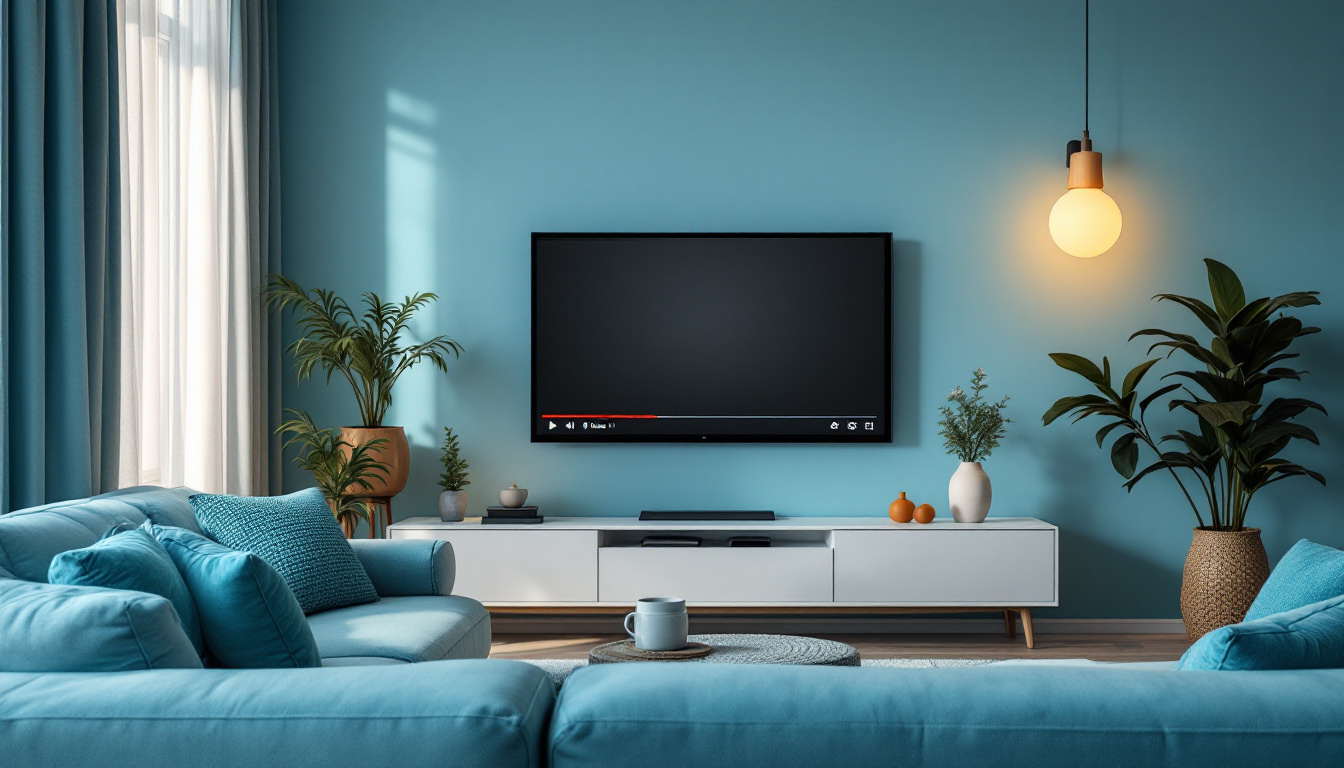Understanding and Addressing YouTube Addiction
In today’s digital age, YouTube serves as a source of entertainment, education, and even companionship. However, for many, this access has transformed from a hobby into an addiction, with significant implications on mental health and personal well-being. This article provides a comprehensive guide on recognizing signs of YouTube addiction and offers actionable steps to overcome this digital dependency.
Recognizing YouTube Addiction
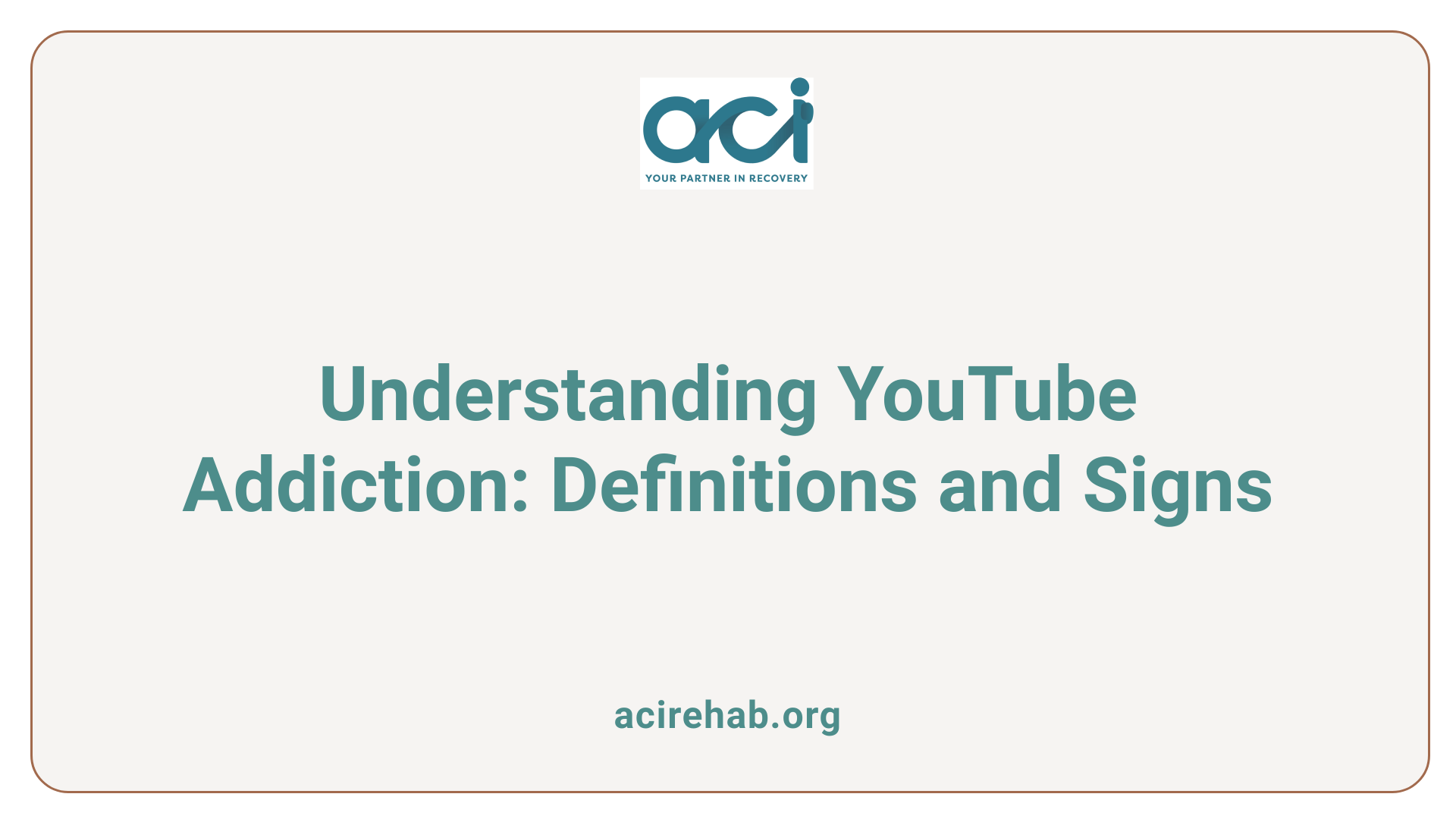
Definition and signs of YouTube addiction
YouTube addiction is characterized by an excessive and compulsive urge to consume video content on the platform, which significantly disrupts daily activities and responsibilities. Individuals suffering from this addiction may find it challenging to stop watching videos, often extending their viewing sessions well beyond planned limits. Signs indicating YouTube addiction include:
- Excessive Viewing: Spending numerous hours each day on the platform.
- Compulsion: Feeling an uncontrollable urge to watch videos despite knowing the negative consequences.
- Neglecting Responsibilities: Putting off important tasks or failing to meet personal and professional obligations.
- Withdrawal Symptoms: Experiencing anxiety or irritability when attempting to cut down on viewing time.
Despite YouTube addiction not being formally classified as a mental illness, experts acknowledge its potential for significant negative impacts on mental health and personal life.
Negative impact on daily life
The effects of YouTube addiction can be profound. Individuals often report increased anxiety, loneliness, and depression, particularly among younger audiences under 29. Excessive screen time has been linked to negative outcomes in education, career, and interpersonal relationships. As viewing habits escalate, users might prioritize watching videos over engaging in real-life activities, leading to a decline in social interactions and emotional well-being. Moreover, YouTube’s recommendation algorithm fuels this cycle by suggesting an endless stream of content, compelling viewers to remain engaged for longer periods than initially intended.
In summary, YouTube addiction disrupts life by fostering compulsive viewing habits that detract from daily responsibilities and social interactions, creating a cycle that’s difficult to escape.
The Psychology Behind YouTube Addiction
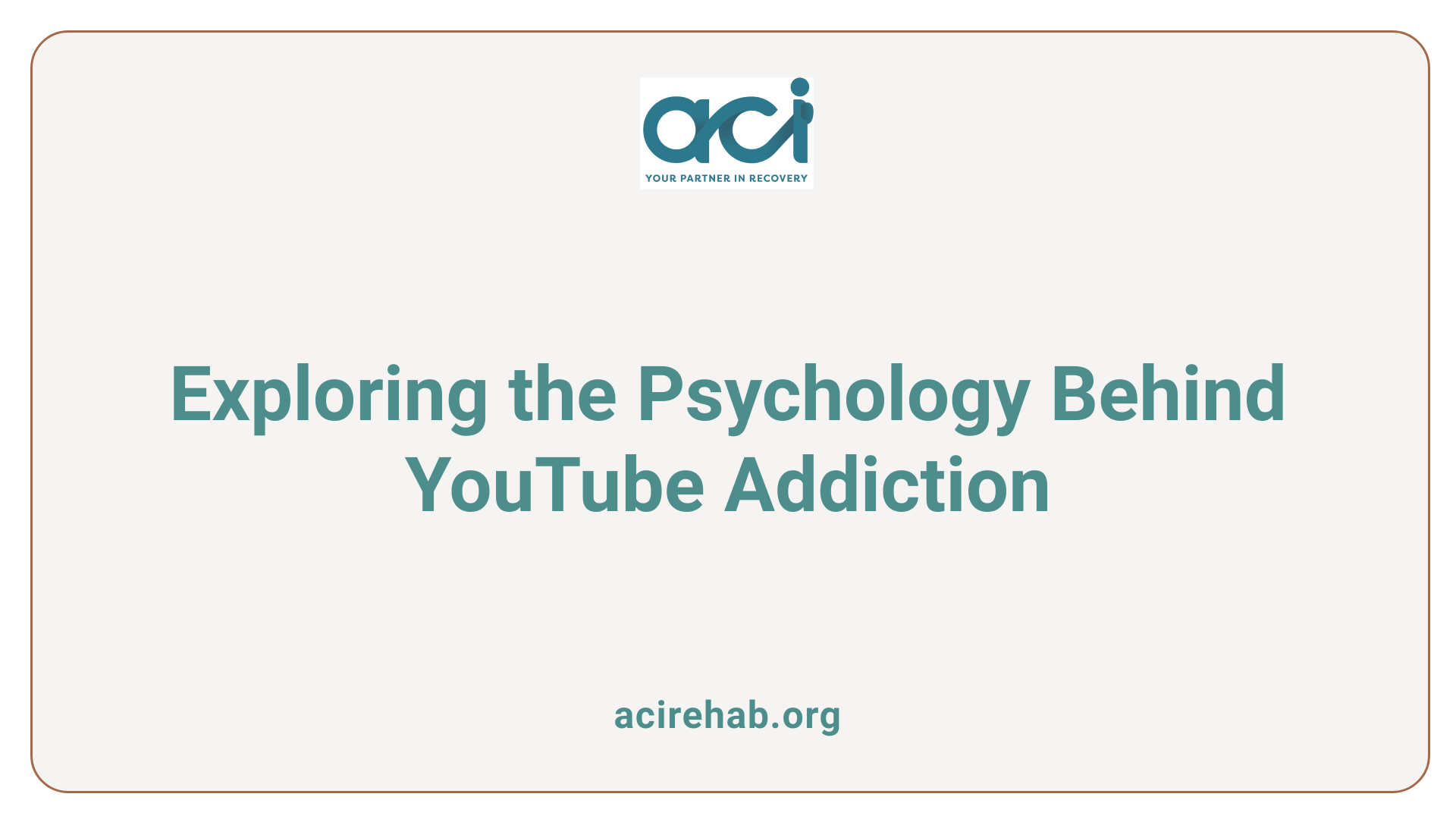
Components of Addiction
YouTube addiction can be identified using the YouTube Addiction Scale (YAS), which encompasses six core components: salience, mood modification, tolerance, withdrawal, conflict, and relapse.
- Salience refers to how much time and thought an individual devotes to YouTube.
- Mood modification involves using videos to alter one’s state of mind, often for relief from negative feelings.
- Tolerance indicates the need to watch more content to achieve satisfaction.
- Withdrawal includes emotional symptoms when not using the platform.
- Conflict concerns the negative impact on personal life and relationships.
- Relapse refers to returning to old habits after attempts to cut back.
Use of YouTube Algorithms
YouTube’s recommendation algorithms further amplify its addictive nature. These algorithms analyze user preferences and viewing behavior, leading to a tailored content feed. Statistics reveal that about 70% of what users view comes from recommendations, making it easier for individuals to engage in prolonged viewing without a clear endpoint. This personalized experience, combined with features like autoplay and notifications, facilitates a continuous loop of consumption, often resulting in excessive screen time and neglect of essential life activities.
Tackling YouTube Addiction: Tips and Strategies
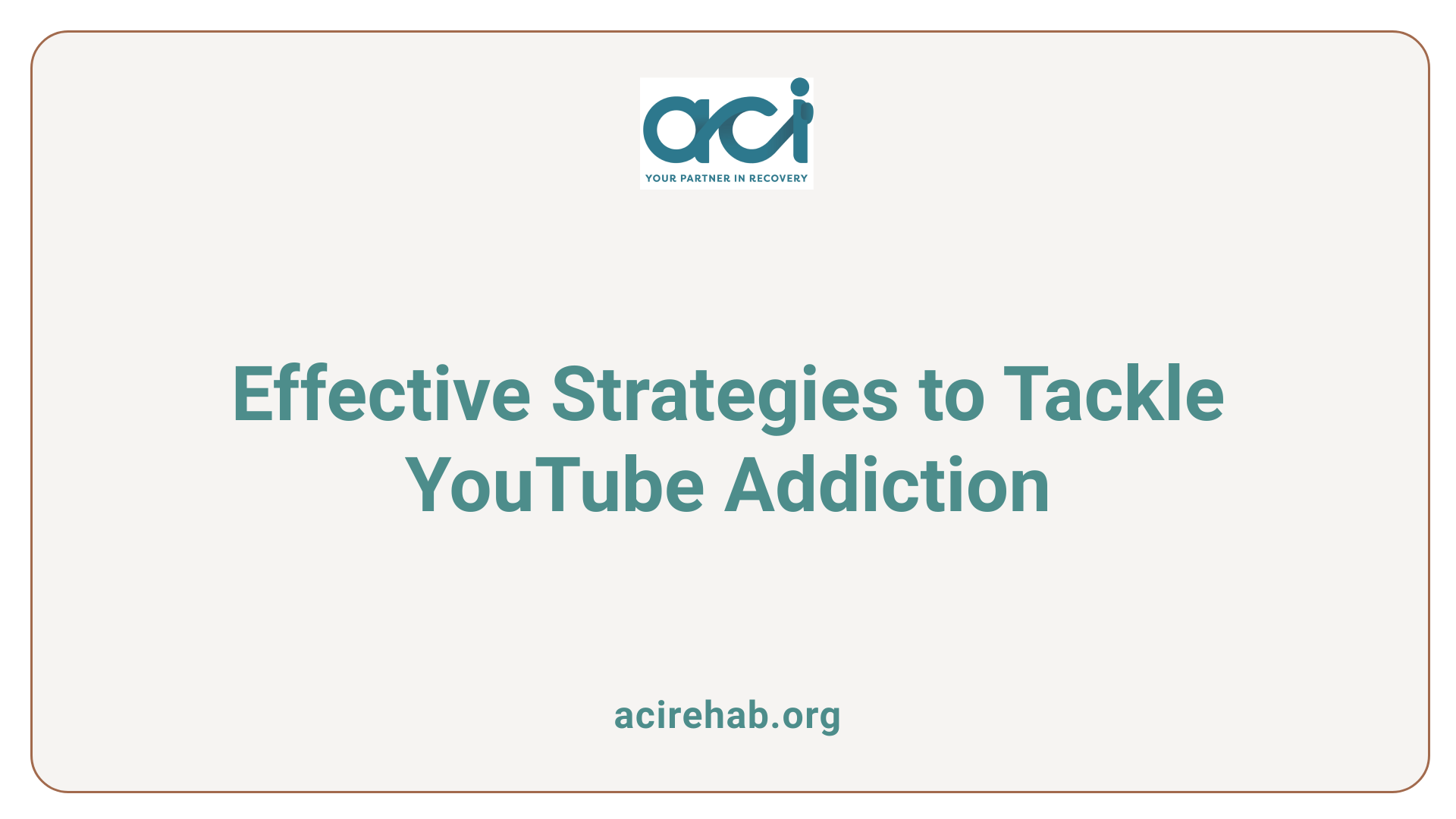
How can I reduce the time I spend watching YouTube?
Reducing your YouTube usage can initially seem daunting, but there are several effective strategies you can implement. Start by setting limits using browser extensions like LeechBlock, which can restrict access during designated hours. Consider removing shortcuts and bookmarks from your browser to make it less tempting to click on YouTube.
Another useful approach is listening to podcasts; they serve as a great alternative, allowing you to multitask without the visual distractions that YouTube presents. Apps like ‘Stay Focused’ can aid in blocking YouTube during specific times, enhancing your productivity and focus.
Furthermore, it’s essential to engage in meaningful projects that capture your interest, which can help redirect your need for entertainment away from YouTube. Finding fulfillment in real-life activities reduces reliance on digital consumption.
Practical Steps to Manage Usage
To effectively curb excessive YouTube consumption, you can implement a few practical steps:
- Clear your viewing history: This breaks the endless cycle of suggested videos based on past activity.
- Set Daily Limits: Use built-in tools or apps to cap your daily viewing time.
- Disable Autoplay: This feature can lead to binge-watching; turn it off to regain control.
- Engage in Offline Activities: Replace screen time with hobbies or sports.
- Establish Internet-Free Zones: Create spaces in your home where technology is not permitted.
Here’s a summary of techniques in a table format:
| Strategy | Description | Purpose |
|---|---|---|
| Clear Viewing History | Remove past videos from influencing suggestions | Break the cycle of compulsive watching |
| Set Daily Limits | Use apps to restrict viewing time | Promote balanced consumption |
| Disable Autoplay | Prevent continuous video play | Stop binge-watching behavior |
| Engage in Offline Activities | Take up new hobbies or sports | Replace screen time with fulfilling activities |
| Establish Internet-Free Zones | Create areas without tech usage | Encourage real-life interaction |
By integrating these steps into daily life, individuals can take proactive measures towards managing their YouTube usage effectively.
Alternative Activities to YouTube
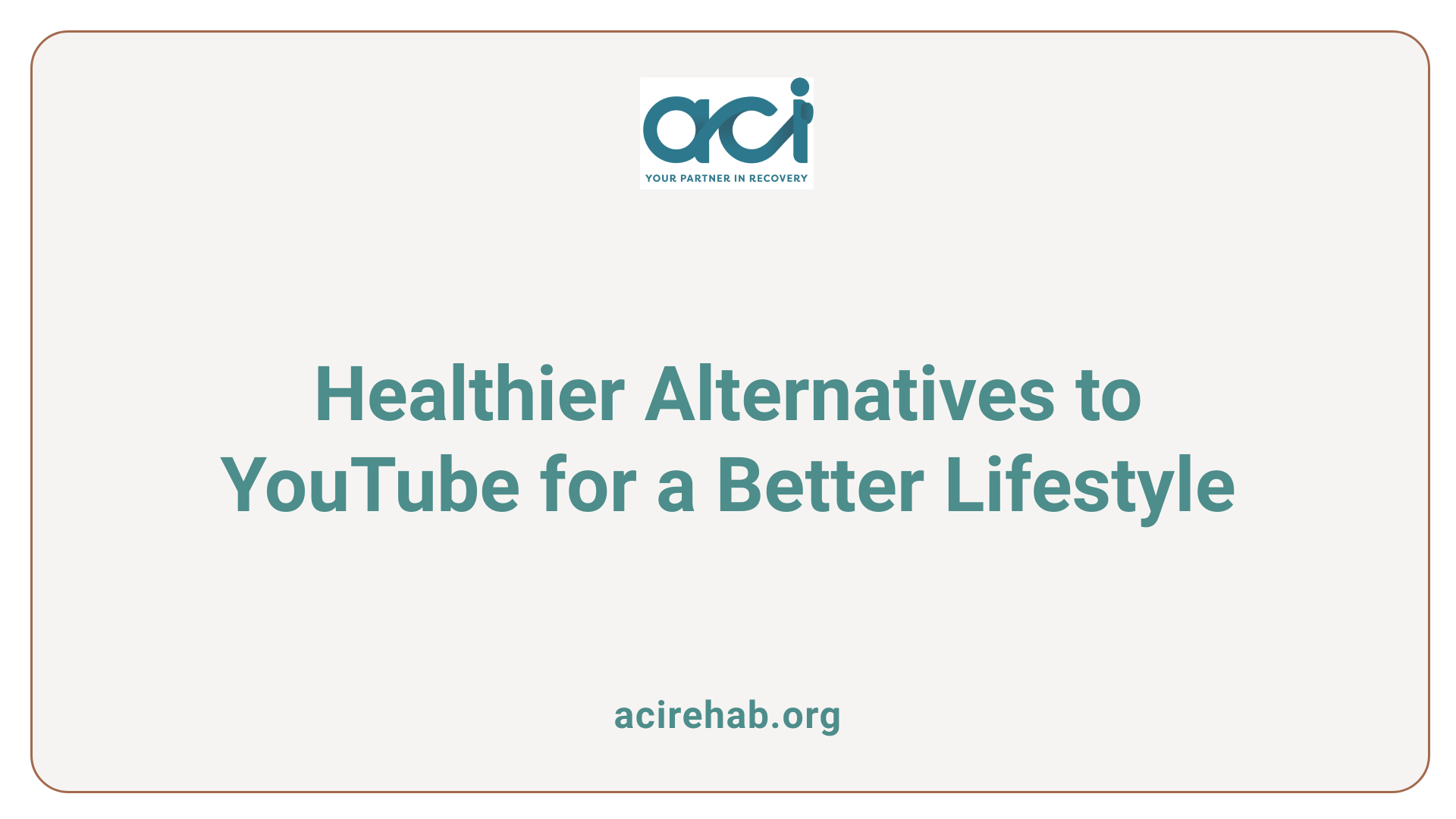
Finding Healthier Hobbies
Engaging in healthier hobbies can effectively reduce time spent on YouTube and improve overall well-being. Here are some alternatives:
- Reading: Dive into a captivating book or explore articles on topics of interest.
- Exercise: Participate in physical activities like running, yoga, or team sports to boost both mental and physical health.
- Arts and Crafts: Explore creative outlets such as painting, knitting, or DIY projects for relaxation and self-expression.
- Gardening: Cultivating plants can be soothing and provides a sense of achievement as you watch them grow.
- Cooking or Baking: Experiment with new recipes, enhancing culinary skills while enjoying delicious results.
Enhancing Social Interactions
Spending time with friends and family fosters connections that often replace the engagement found through YouTube content:
- Game Nights: Organize board game or video game sessions to bond with loved ones in an interactive way.
- Outdoor Activities: Going for a hike, a picnic, or playing sports encourages physical activity while enjoying nature.
- Volunteering: Get involved in community service, which provides fulfillment and social engagement.
Engaging in these alternative activities can not only divert from excessive YouTube use but also enhance personal and social well-being.
Managing Children’s YouTube Consumption
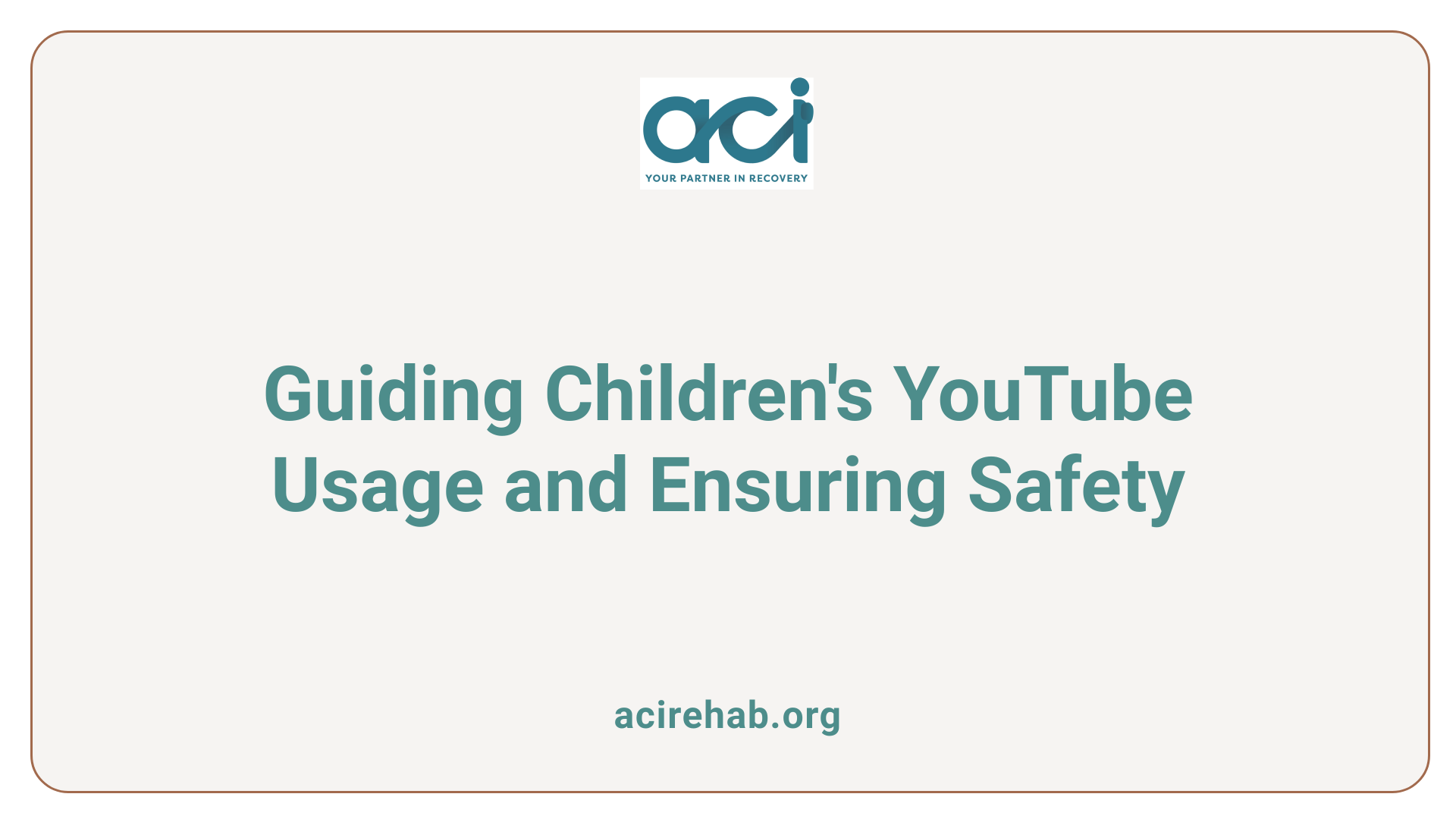
Parental Guidance and Safety
Managing a child’s YouTube consumption starts with effective parental guidance. Parents should engage in open dialogues about online content, ensuring kids understand the potential dangers associated with unrestricted viewing. Emphasizing the importance of watching age-appropriate materials can empower children to make safer choices.
To reinforce safety, parents can utilize YouTube’s Restricted Mode, which helps filter out inappropriate content. Additionally, establishing clear rules about what channels are appropriate can prevent exposure to harmful or distracting videos, promoting a healthier viewing experience.
Screen Time Recommendations
Screen time recommendations for children often suggest limiting recreational screen time, including YouTube, to about one hour per day for children aged 2 to 5 years. For older kids, it’s essential to balance online activities with offline ones, ensuring time is set aside for homework, physical activities, and family interactions.
To cultivate a balanced lifestyle, parents can implement strategies like setting screen time limits, scheduling break times, and encouraging alternative activities such as outdoor play, art, or reading. This approach not only reduces the risk of YouTube addiction but also fosters healthier social interactions and physical well-being.
The Role of Technology in Curbing Addiction
Tools and apps to limit YouTube usage
Managing YouTube addiction can be greatly assisted by various tools and apps designed to track and limit screen time. Here are a few effective options:
- Screen Time Monitor: These apps allow users to track the amount of time they spend on YouTube and set daily limits to ensure healthy usage patterns.
- YouTube’s Built-in Features: Tools like ‘Time Watched’ provide insights into viewing habits. The ‘Take a Break’ reminder helps users remember to step away from the screen periodically.
- Locking Apps: Some apps enable users to lock access to YouTube for a set period, reinforcing discipline and reducing impulsive viewing.
Notification management
Managing notifications can significantly reduce YouTube usage. Here are strategies to consider:
- Disable Notifications: Turning off YouTube notifications minimizes distractions, allowing users to focus on tasks without the temptation of new video alerts.
- Scheduled Viewing Times: Setting specific times to check YouTube rather than responding to every notification helps cultivate a more controlled approach to consumption.
- Physical Reminders: Utilizing alarm clocks or digital reminders for tasks can aid in maintaining attention on primary responsibilities instead of constantly checking YouTube.
Implementing these tech tools can empower users to regain control over their YouTube habits.
Reclaiming Your Time: Building New Habits
Setting Routines and Boundaries
One effective way to manage YouTube addiction is by establishing clear routines. Setting specific times for viewing can help limit excessive use. Using features like ‘Time Watched’ enables users to track their engagement, making it easier to recognize when they are overspending time on the platform.
Additionally, implementing app usage restrictions can create necessary boundaries. Rewarding yourself with video time after completing tasks can instill a sense of control over your viewing habits. This structured approach promotes balance, combating the impulsivity that often accompanies compulsive watching.
Creating Internet-Free Zones
Designating areas in your home as internet-free zones can significantly reduce the temptation to watch videos. This promotes healthier interactions and allows for quality time spent with family or engaging in hobbies. Similarly, encouraging physical activities or sports helps divert attention from screens, benefiting both mental and physical health.
Ultimately, striking a balance between online and offline activities enables users to regain control over their habits, fostering a more enriching lifestyle beyond the endless scrolling of YouTube.
Understanding Behavioral Addictions
Comparing YouTube addiction with other behavioral addictions
YouTube addiction is a form of behavioral addiction that parallels other compulsions seen with social media and gaming. Much like gaming addiction, individuals may engage excessively in YouTube content to escape reality or cope with negative feelings. Both types of addiction can lead to neglect of daily responsibilities and relationships.
Research shows that these behavioral addictions activate the brain’s reward system, releasing dopamine with each video viewed, similar to the effects seen in gambling or shopping compulsion. The continuous cycle of engagement makes it hard for individuals to recognize their growing dependency on the platform.
Impacts on mental health
The mental health implications of YouTube addiction can be severe. Individuals, especially those under 29, often experience heightened anxiety and feelings of loneliness. The compulsive nature of viewing content leads to neglecting important life activities, which may exacerbate feelings of sadness or depression.
Moreover, behavioral addictions can disrupt sleep patterns and contribute to issues like social withdrawal. As users increasingly rely on videos for emotional satisfaction, they may find themselves facing obstacles in personal interactions and overall well-being.
| Type of Addiction | Symptoms | Impact on Mental Health |
|---|---|---|
| YouTube | Excessive viewing, compulsive watching | Increased anxiety, loneliness |
| Gaming | Loss of control, social isolation | Depression, sleep issues |
| Shopping | Impulsive purchases, emotional shopping | Guilt, financial stress |
Recognizing and addressing addiction behaviors is essential for maintaining mental health and fostering healthy habits.
The Importance of Self-awareness and Mindfulness
Self-reflection on digital habits
Recognizing one’s relationship with YouTube is vital. Engaging in self-reflection helps individuals assess their viewing patterns and how they affect daily life. Ask yourself questions like: Are YouTube videos a source of joy or a distraction? Do you often feel guilty after binge-watching? Such reflections can highlight addiction warning signs and prompt changes.
Practicing mindfulness
Mindfulness techniques can aid in managing YouTube usage. Start by setting specific time limits for viewing and using the ‘Time Watched’ feature to stay aware of consumption patterns. Implementing breaks, turning off notifications, and even creating internet-free zones in your living space can foster a healthier balance. Moreover, engaging in physical activities or hobbies can fulfill your need for connection and productivity, making less room for compulsive viewing.
| Mindfulness Practices | Purpose | Implementation Tips |
|---|---|---|
| Self-reflection | Assess viewing habits | Journal your usage experiences |
| Time limits | Control excessive viewing | Use phone settings for alerts |
| No notifications | Reduce distractions | Turn off YouTube notifications |
| Internet-free zones | Foster offline connection | Designate tech-less spaces |
| Alternative activities | Replace screen time with engagement | Explore new hobbies or sports |
Overcoming YouTube Addiction
While YouTube addiction can seem daunting, it is possible to regain control over your time with conscious effort and the right strategies. By implementing changes in your digital routine and reevaluating your relationship with technology, you can foster a healthier, more balanced lifestyle. Remember: the journey towards better digital habits begins with the first small step.
References
- YouTube Addiction: How To Stop Binge Watching
- How I Cured My YouTube Addiction – Medium
- YouTube Addiction: Signs, Causes, Effects, and Treatment
- How to Break YouTube Addiction – Game Quitters
- YouTube Addiction: Causes, Signs, & How to Stop – Choosing Therapy
- Helpful Tips to Stop Being Addicted to YouTube – wikiHow
- How to Stop YouTube Addiction in Kids? – Safes Parental Control App
- How to get over your YouTube addiction | Archives | dailycal.org
- YouTube Addiction: Signs, Causes, Effects, and Treatment

